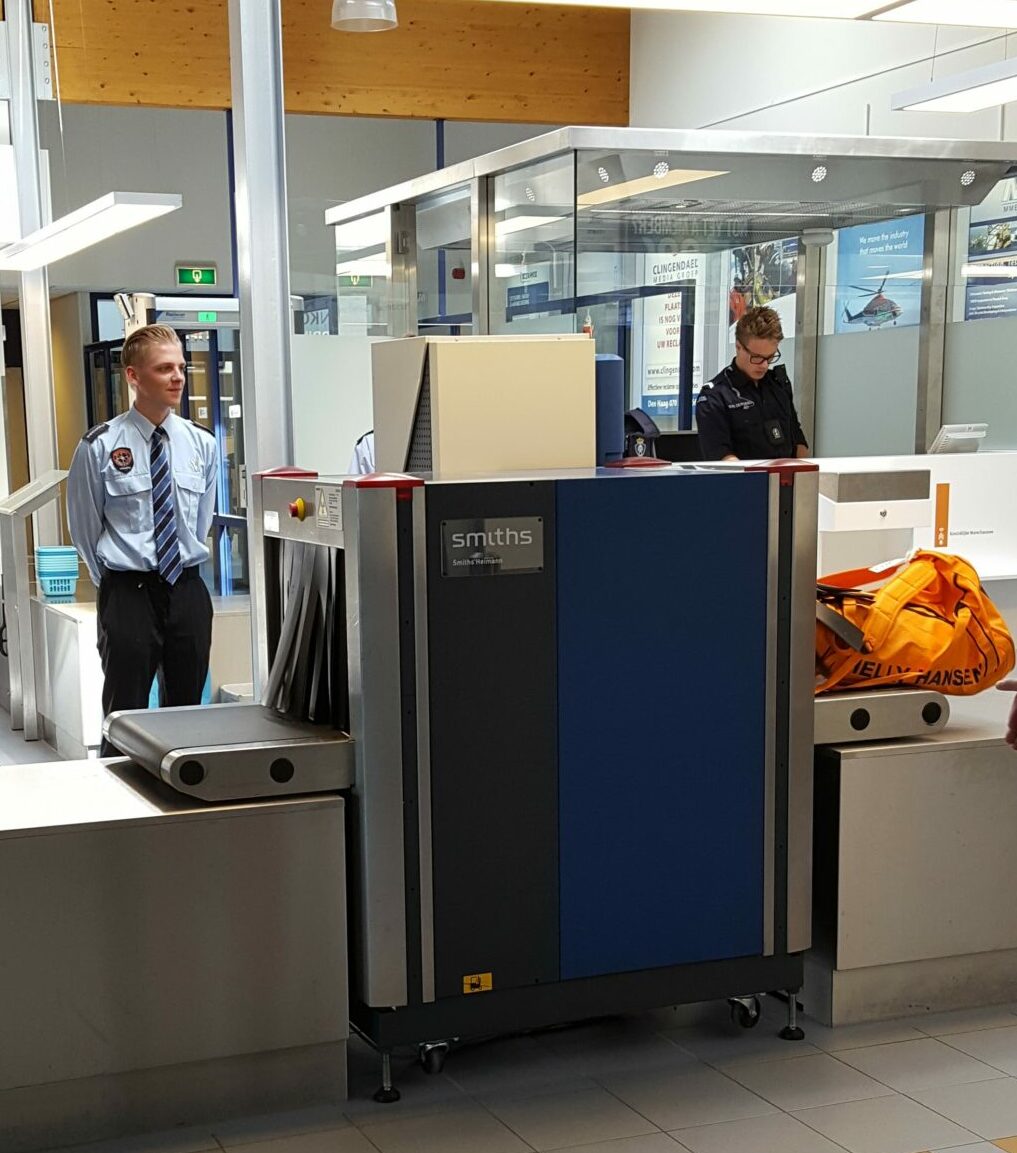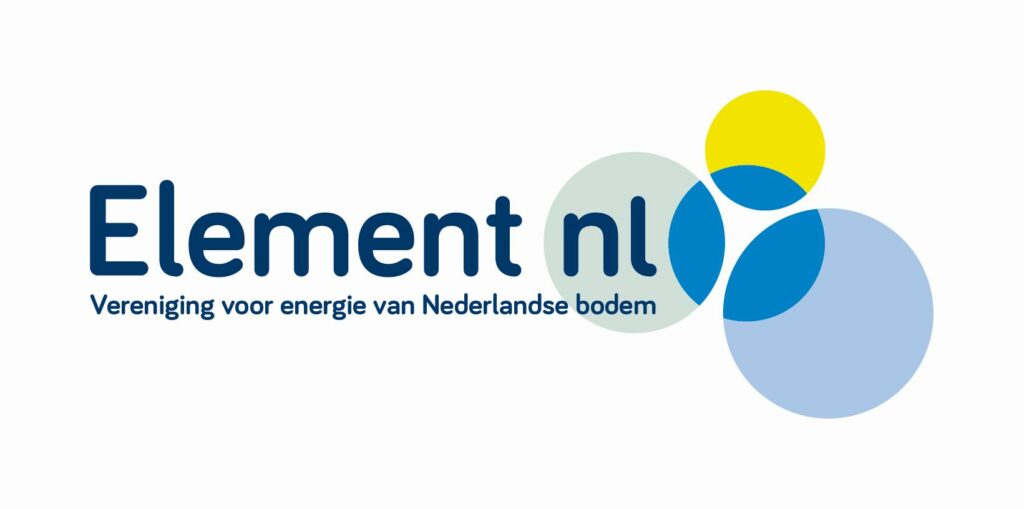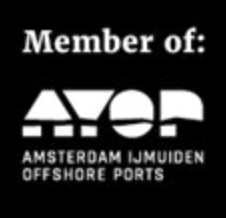Resume
Thanks to its particularly strategic location on the North Sea, Den Helder Airport has been facilitating the transport of cargo and passengers by helicopter to the sea since the late 1960s. With Den Helder Airport, the Netherlands has a unique offer for maintaining the Dutch offshore energy tasking. Den Helder Airport is also the only airport in the Netherlands that is fully equipped to guarantee the security of supply of offshore energy, because the security systems in place fully check passengers, luggage and cargo. This allowed offshore flights to continue during the corona lockdowns. The systems that ensure this have been imposed by the oil and gas sector for 55 years, but have never been enshrined in legislation. With the arrival of offshore wind in the North Sea, this omission becomes painfully clear now that this sector often makes different choices for cost reasons.
In addition, since 2015, the energy transition has caused a structural decrease in flight movements throughout the North Sea, as a result of which the business case has shrunk from 19 to 6 European offshore airports around the year 2040. In contrast, under pressure from the offshore wind sector, new (unsecured) helicopter airfields. Partly because these are cheaper than Den Helder Airport due to the marginal equipment. This has created a dangerously uneven playing field for Dutch offshore aviation.
Legal framework
There is no legislation for transporting passengers and cargo by helicopter to critical energy infrastructure at sea. In 2021, Den Helder Airport discussed this with the Ministry of Infrastructure and Water Management. In that meeting, a request was made to develop a targeted offshore aviation policy and to include it in the implementation agenda of the aviation memorandum. Although the Ministry is sympathetic to Den Helder Airport's plea, people are concerned about market disruption. But market disruption exists precisely because of a lack of legislation. Den Helder Airport can now only compete by scaling down all security systems itself and reducing the level of facilities to the level of the other small regional airports. In this scenario, the Netherlands could lose the ability to fly offshore in the event of a substantial threat (think Nord-Stream 1 and 2). And once infrastructure has been scaled down, it won't come back any time soon.
By way of illustration: the International Ships and Port Facility Security (ISPS) code was enshrined in the Port Security Act in the Netherlands in 2004, as a result of which ports received the same security as airports. Paradoxically, seaports today therefore offer better security against unauthorized access to the primary energy systems at sea than Dutch regional civil airports. And that makes us (unfortunately) unique in Europe.
In short, the lack of aviation legislation for offshore aviation has created an uneven playing field, which not only directly threatens the continued existence of Den Helder Airport, but also poses a risk to the security of the critical energy infrastructure in the Dutch part of the North Sea.
Solutions
- The revised implementation agenda of the Aviation Memorandum must include that the Ministry of Infrastructure and Water Management will monitor the implementation of legislation and regulations that guarantee security requirements for offshore aviation.
- Implementation of EU Directive COM-829 (CER, whose implementation to be expected mid 2024). This guideline describes policies regarding the resilience of critical entities. The member states of 10 sectors are asked to compile an overview of critical infrastructure and providers therein before the end of 2023, in order to substantially increase its resilience. Den Helder Airport can be linked to 2 sectors from this guideline, namely; Energy and Aviation. The Ministry of Defense is responsible for the implementation of the CER directive.
Why is Den Helder Airport indispensable?
The secure air transportation of cargo and technicians to critical offshore energy infrastructure is of national importance for sustaining the bulk of our climate action. There is no alternative to this. Helicopters are an inseparable addition to ships, just as the SAR helicopters are on Navy and Coast Guard vessels.
Level playing field
Today, Den Helder Airport often has the same security systems as many international airports, supplemented with regular drug and alcohol checks and the presence of military police and customs. This makes Den Helder Airport unique in its kind. Other small airports in the Netherlands from which offshore flights are flown do not meet these self-imposed security requirements due to the lack of regulation, which compromises the general security in both the airspace and on the offshore platforms. Because demand is declining as a result of the energy transition, there will eventually be too few flights left for all Dutch airports and Den Helder Airport, due to its specific layout, will be the first to end up in the red.
Sustainability
The margins of the offshore wind sector are under great pressure and the sector chooses small cheap helipads to maintain the wind farms. Think of helicopter fields in Eemshaven, IJmuiden, Amsterdam-West, Oostwold, and Central Zeeland. In addition to the high costs, the sector considers Den Helder Airport to be too far away from the northern wind farms.
Only a few of these airfields have maintenance space for helicopters, so in daily practice empty helicopters first fly to Eemshaven to fly passengers offshore from there and vice versa. These passengers were usually first transported by bus to Eemshaven via Schiphol. If all these preparatory logistics kilometers are added together, the fact that Den Helder Airport is too far away is no longer true.
Now that the wind farms are being built further and further offshore and the business case is shrinking, Den Helder Airport simply remains the most geographically efficient, safe and sustainable location for all wind farms.
Delivery security
With the enormous increase in offshore wind farms in the North Sea, a growing security problem has also been identified since 2016. In 2021, the The Hague Center for Strategic Studies (HCSS) will High Value of the North Sea reported, among other things, that large parts of the offshore energy systems are poorly secured, the responsibilities between ministries are fragmented and there is a lack of targeted policy, supervision and direction. The Netherlands wants to install more than 70 GW of offshore wind energy by 2050 (in 2021 there was 2.4 GW in the Dutch part of the North Sea). To achieve this, the targets for 2030 have been doubled, from 11 GW to more than 21 GW. In order to be able to combine these objectives with gas extraction in the North Sea, which is necessary due to the ban on Russian gas, the Minister of Economic Affairs and Climate Policy has proposed to the Chamber that conflicting helicopter flights should be banned in these parts of the North Sea.
This acceleration of offshore wind also accelerates the aforementioned flaws, such as a lack of legislation and the North Sea Agreement, which includes restrictions on helicopter traffic. All this without adversarial communication.
Closing
In summary, Den Helder Airport advocates the realization of a constructive dialogue and legislation and regulations for the offshore aviation sector to protect the security of supply of the growing supply of offshore energy facilities in the North Sea. Especially now that we still have this unique infrastructure.
| Appendix I: About Den Helder Airport
Origin history Dutch offshore aviation dates back to the late 1960s, when the first helicopter flights for the American oil company Placid shuttled between Den Helder and the drilling rigs in the Southern North Sea from a specially constructed heliport of the municipality of Den Helder under a Nuisance Act permit.
In 1981, the sharp increase in exploration and extraction of oil and gas in the North Sea resulted in more and more passengers flying offshore via Den Helder. Subsequently, a permit for shared use by the operator of military airport De Kooy (Airport Decree De Kooy) was agreed for Den Helder Airport CV. At this military airport, civilian co-user Den Helder Airport has grown into the third largest helicopter operation in Europe. During this period, the oil and gas companies registered in the Netherlands organized themselves in the sector association NOGEPA, which, among other things, promoted safety and security of supply of offshore energy. The association also imposed a large number of measures on Den Helder Airport, with which the transport of passengers and cargo was heavily secured with both procedures and additional facilities. Marchaussee and Customs were also already active at the airport at that time.
Due to all these measures, Den Helder Airport today often has the same security systems as at many international airports, supplemented with regular drug and alcohol checks. This made Den Helder Airport unique in its kind. In recent years, due to the energy transition, flight weights have continued to decrease compared to the peak year of 2008. This effect can be measured around the entire North Sea. A consolidation to ultimately 6 European offshore airports is therefore a fact.
Den Helder Airport within aviation legislation Within Dutch aviation legislation, airports are divided into: Schiphol airport, other civil airports and military airports.
Other civil airports can be of regional significance or of national significance. Airports are of national significance if they are located outside provincial boundaries as determined by virtue of the Provinces Act or by law. Airports of national importance are Lelystad, Eelde, Maastricht and Rotterdam.
The aviation sector is divided into a civil sector, civil aviation, and a non-civil sector. The latter sector includes air traffic that is active for military, police and customs tasks. The civil aviation sector consists of:
From the point of view of aviation legislation, Den Helder Airport is a small regional airport with a permit for civil shared use from the Ministry of Defence. |
01-09-2023







